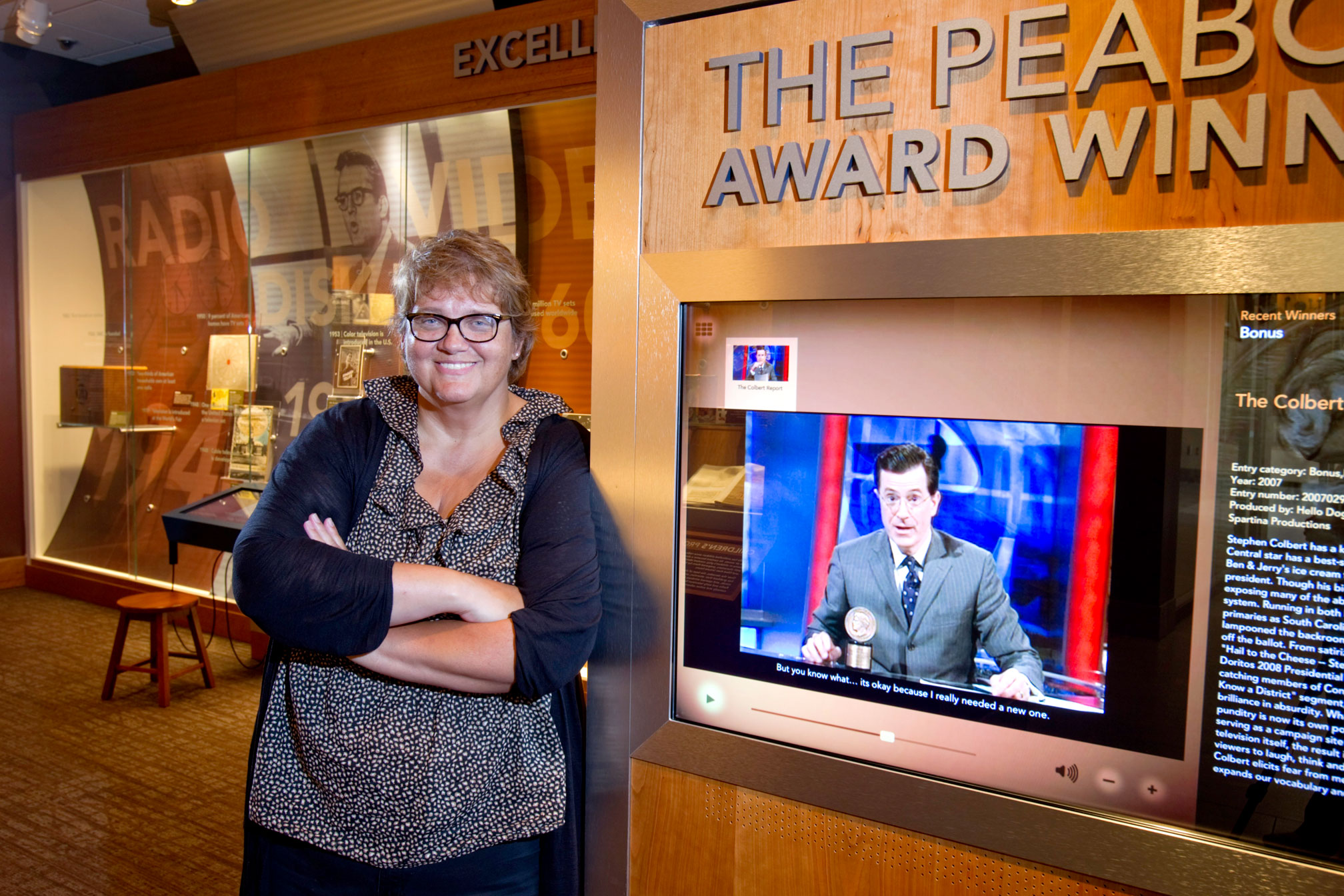What was South Georgia like at the end of the 19th century? Tobacco and cotton fields as far as the eye could see? Yes, but also vast hunting plantations for the wealthy to indulge in genteel past times surrounded by natural beauty.
A glimpse into that life is not only available at Pebble Hill Plantation near Thomasville, but also through a collection of some of the earliest home movies made in Georgia—and thought to be the oldest still in existence—which have been donated to the Walter J. Brown Media Archives and Peabody Awards Collection at the UGA Libraries.
The third largest broadcasting archives in the country and the only public institution in Georgia devoted entirely to preserving moving images, the Media Archives was founded in 1995, with collections dating back to the 1920s. The Media Archives joins the Hargrett Rare Book and Manuscript Library and the Russell Library for Political Research and Studies in the Richard B. Russell Building Special Collections Libraries, which opened earlier this year.
However, unlike those collections, its museum gallery has comparatively few artifacts; instead three rooms devoted to each of its collecting areas are filled with interactive kiosks. In preparing to move from the main library, media staff digitized some 250 to 300 titles in various formats to populate the kiosks with footage from many of the 180 collections they preserve. Every kiosk contains 10 to 12 clips, each about two minutes long.
Dominating the media museum space is the Peabody Awards Collection, which contains nearly every entry for the first major award given for electronic media in the U.S. Administered through the Grady College of Journalism and Mass Communication, the award program began in 1940 for radio, 1948 for television and 2000 for Web entries. At least 1,000 new entries are received every year—programs by local, national, cable and international producers. An entry can be a single documentary or an entire television series so 1,000 entries usually equals about 6,000 new items coming to the archive from that one collection each year.
“The collection provides a cultural cross-section of television from its infancy to the present day, featuring news, documentary, entertainment, educational and children’s programming,” said Ruta Abolins, director of the Media Archives. “In addition to being the ultimate recognition of broadcast excellence, it is also very significant that entries to the Peabody Awards are self-selected by their producers.”
Around the gallery is a timeline of broadcast history and exhibits relating to Peabody Award-winning children’s programs, musical variety shows and environmental stories.
The area devoted to national collections centers around the theme, “The art of the interview.” Due to the diversity of the collections, researchers and visitors can compare interviewing styles.
A third gallery is devoted to Georgia collections. Georgia history is highlighted in three newsfilm collections, including the WSB-TV collection which contains raw news footage from 1949 to 1981. More than 5 million feet of film clips show the history of Atlanta and the Southeast, including the span of the entire civil rights movement.
“The WSB collection is historically important because of WSB’s dominance in the Southeastern region,” Abolins said. “Most newsfilm from other local TV stations was discarded after it was shown, but WSB held onto theirs and seemed to have an innate sense about the history they were documenting on a daily basis. ”
The Georgia Folklore Collection of field recordings of Georgia folk musicians made by Grammy winner and UGA professor Art Rosenbaum and the Georgia Folklore Society includes more than 1,000 hours of music, interviews and storytelling. The Foxfire Collection contains the videotaped interviews, performance and music of this Georgia institution from 1970 to 1990. Home movie collections, including the Pebble Hill movies, town films and footage related to UGA round out the Georgia collections.
Appalachian folk life is highlighted in an exhibit with pieces including handmade furniture and farm tools, a copper pot still, early fiddles, one used by the legendary Gid Tanner—the instrument that helped craft country music and folk art.
Another exhibit features promotional materials from Peabody Award submissions, including a typewriter-shaped press kit from a 2006 documentary entry on Hunter S. Thompson. Malcolm in the Middle, a 2000 winner, is represented with a cereal box featuring the fictional family and includes collector’s cards, cast photos, production information and episode credits. These items are never seen by the judges and have been in storage until they could be shown the exhibit galleries.


